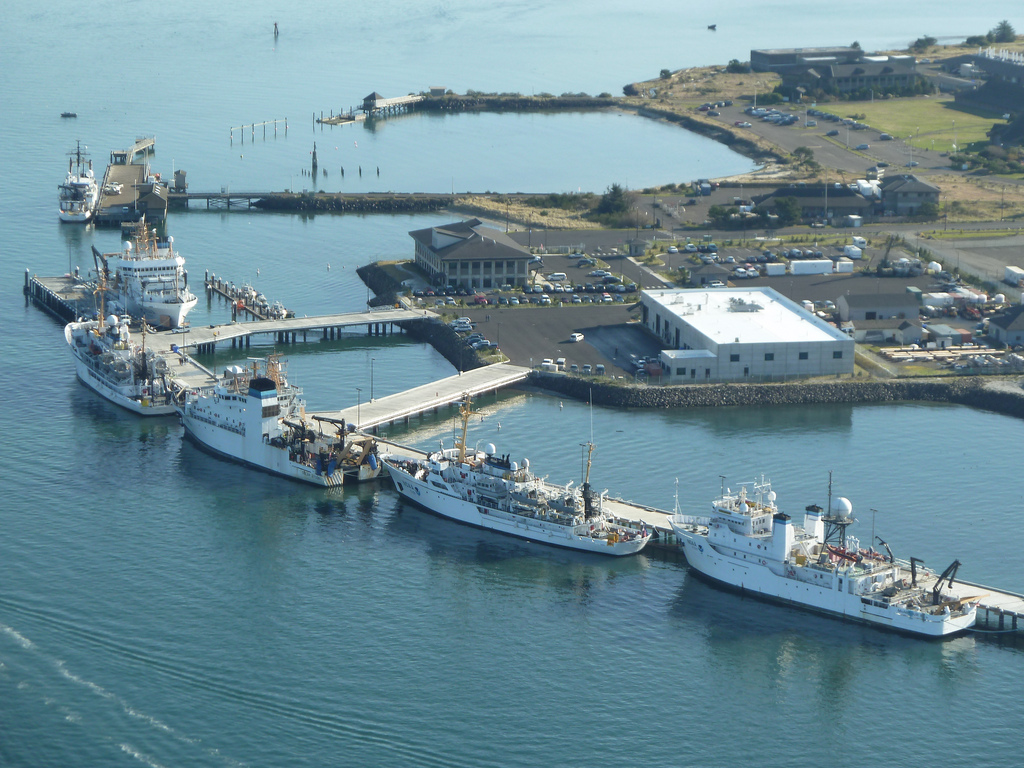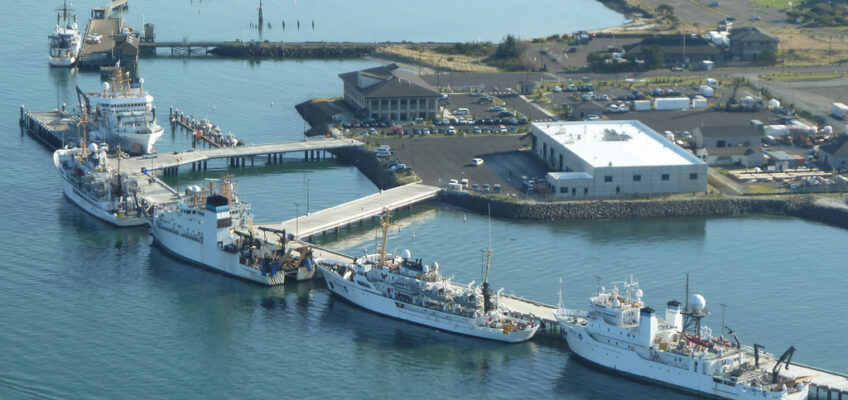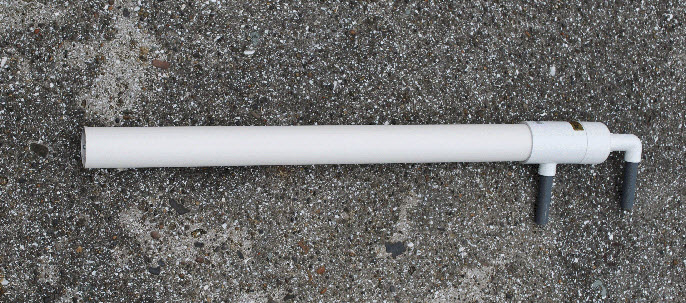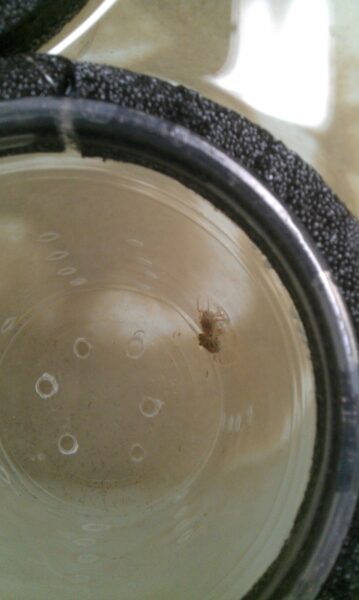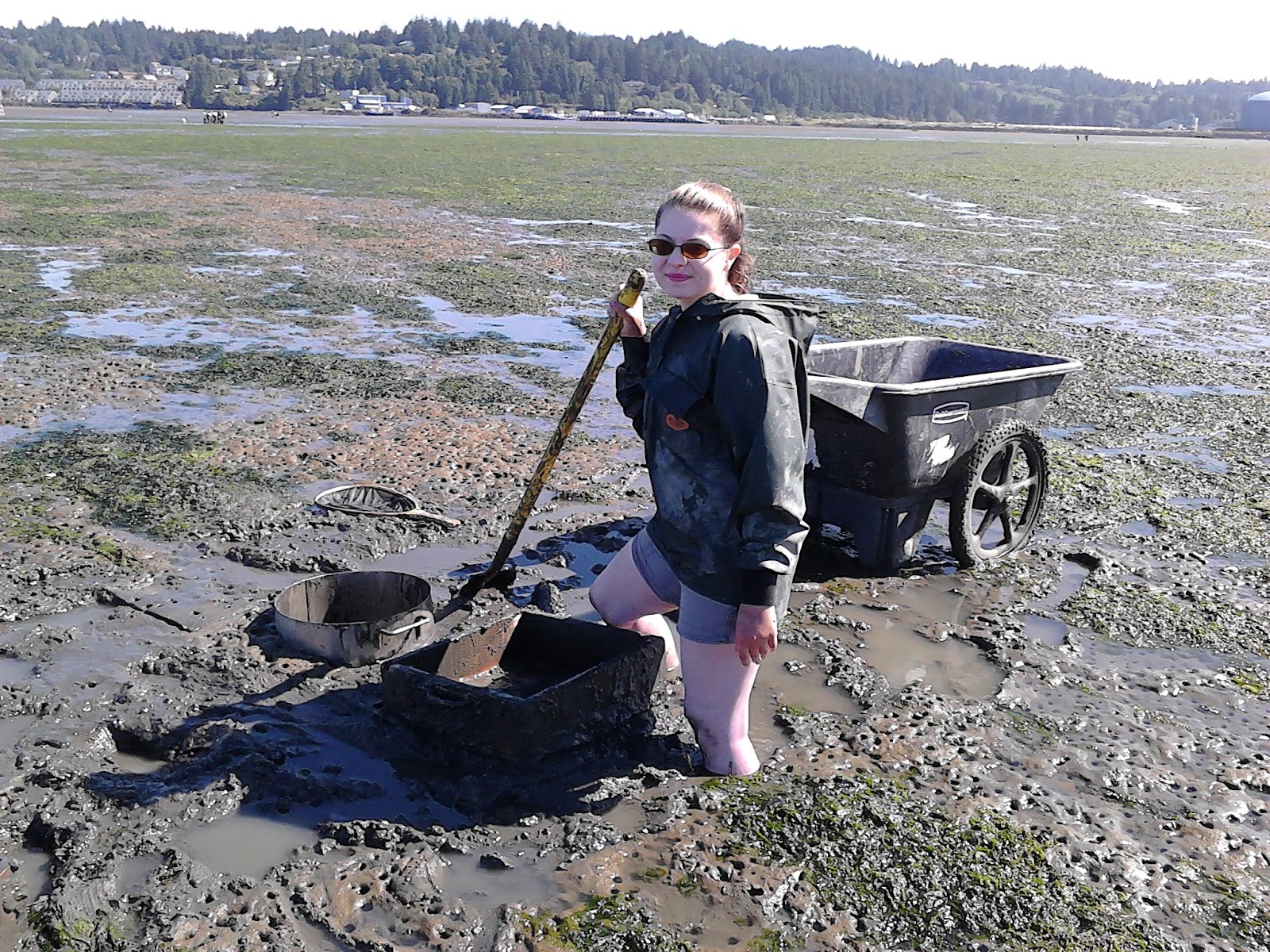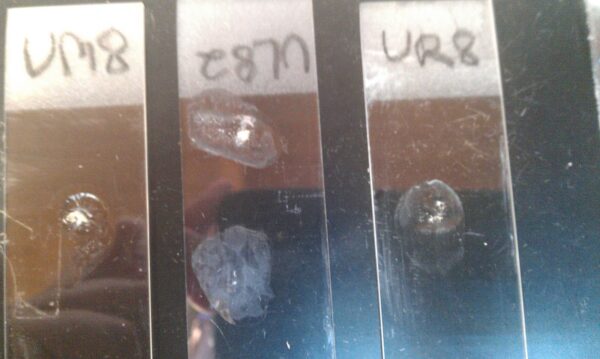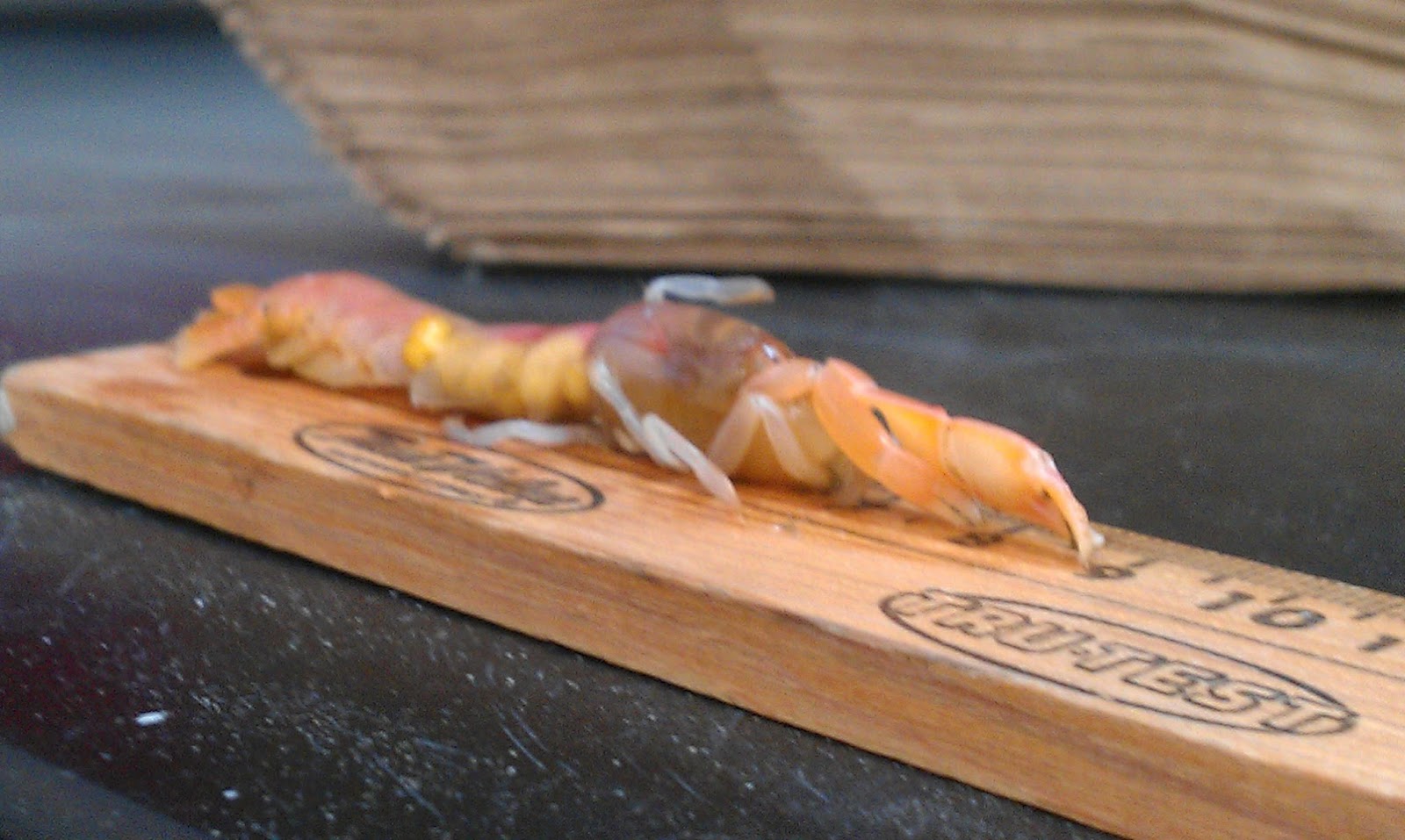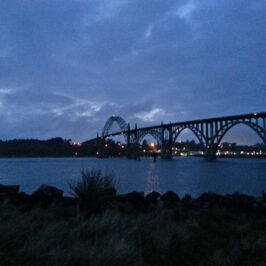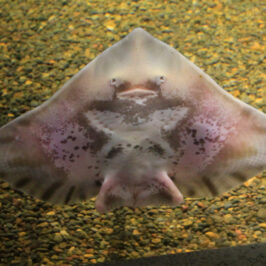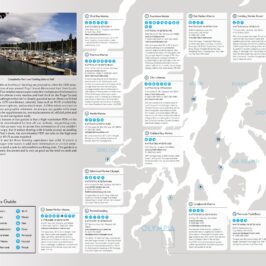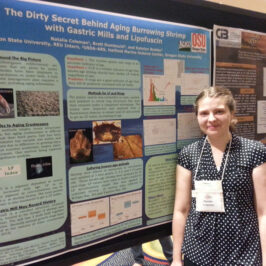Week 1 – June 30, 2013
My name is Natalie Coleman and last term I finished my Associate of Science Degree at Portland Community College. I will be transferring to Oregon State University in the fall to complete my B.S. in Zoology with a Marine Biology minor. I was drawn to the PRIME program because research is a very important aspect of my career goals and obtaining research experience is very difficult without university connections. The COSEE PRIME program offers an opportunity I would otherwise not have had. I grew up in the San Francisco Bay Area in California and have been interested in marine science since I first went tide-pooling at the age of four. My ultimate career goal is to work toward the conservation of marine life, especially mammals and sharks.
This summer I am working with Dr. Brett Dumbauld, a scientist working with the US Department of Agriculture, who is researching the effect of two species of burrowing shrimp on the oyster aquaculture in the Pacific Northwest. The way in which these shrimp, Upogebia pugettensis andNeotrypaea californiensis, burrow causes the substrate—the mudflats where the oysters and shrimp live—to collapse or make it impossible for the juvenile oysters to settle and grow. I will also be working with Dr. Dumbauld’s PhD student Katelyn Bosley to help build an age structure ofUpogebia puttegensis. The population model she is creating will help scientists better understand how to help the oyster aquaculture without significantly damaging the shrimp population. Currently Katelyn is using lipofuscin—a brain pigment which accumulates with age—to determine the age of the shrimp collected. This summer I will try a new technique which utilizes the calcified eye stalks to age these shrimp. The eye stalks have been found to contain annual rings, much like tree rings, in crabs and lobsters but I will be the first to try this technique on UpogebiaandNeotrypaeashrimp.
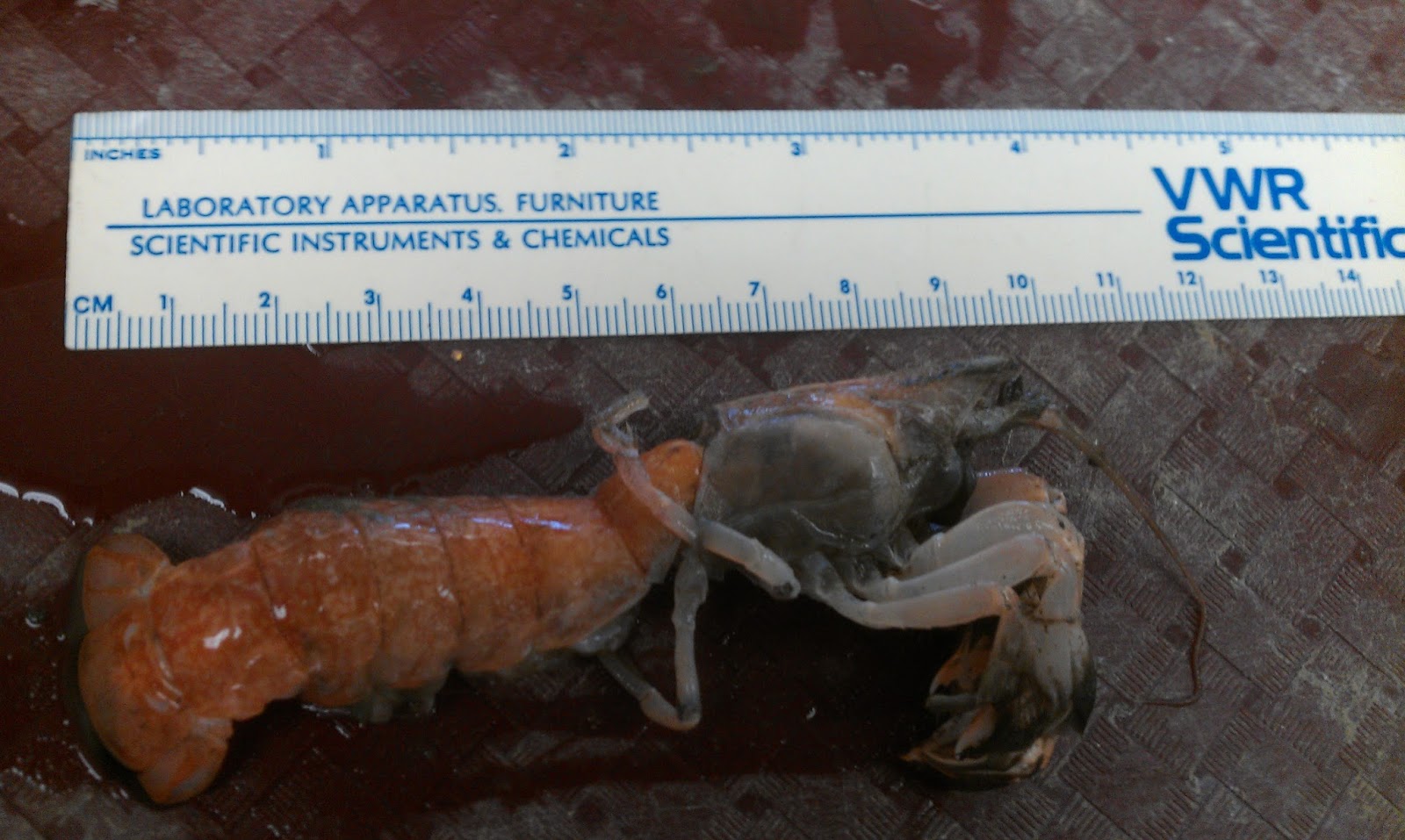
This week I have already gone into the field at the Yaquina Bay estuary with Dr. Dumbauld to sample the smaller shrimp who are just returning to the mudflats from their pelagic—open ocean—lifestyle. These “recruits” help determine the condition of the populations of different estuaries. The next task was to measure the carapace—the shell covering the top of the shrimp head—and total length of these shrimp and preserve them in alcohol for further study. I was able to analyze all of the recruits from Yaquina Bay and found nine, whereas the samples from Willapa Bay in Washington and Tillamook Bay in Oregon contained no recruits. The next field assignment was to take larger samples from the mudflats to retrieve larger shrimp. I also measured the carapace and total length for these shrimp, but in addition I recorded the sex of each shrimp and whether or not they contained a parasitic isopod—a blood sucking invertebrate that latches onto their gills. Though these parasites do not kill their host shrimp they make it impossible for the females to produce eggs because they lack energy, which reduces the population of Upogebia. Dr. John Chapman is working with Dr. Dumbauld to investigate the effects of this parasite on the shrimp populations. Their research revealed that this parasite is an introduced—non-native—species from Japan.
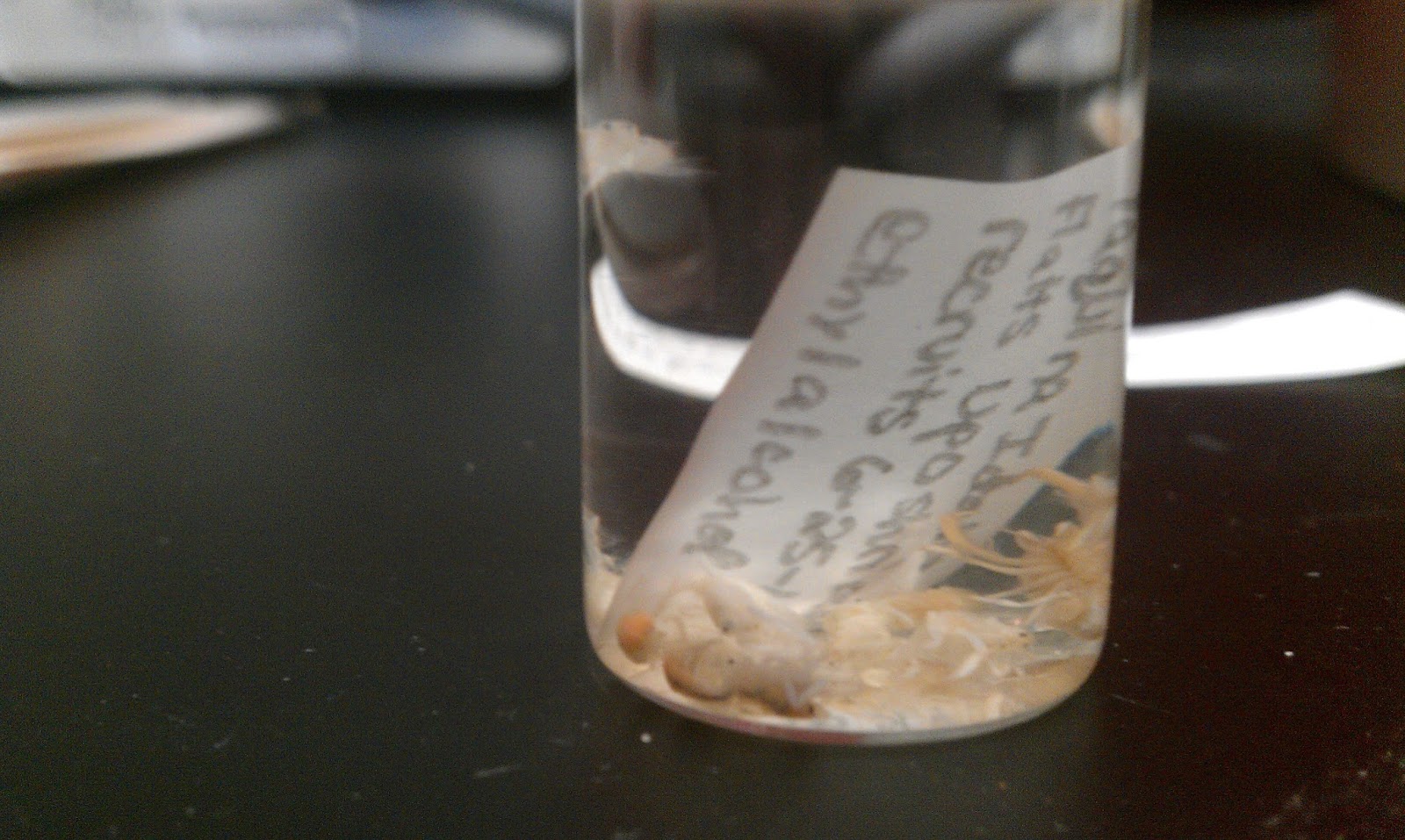
My first week was extremely messy, fun, and informative. I cannot wait to see what next week will entail.
Week 2 – July 6, 2013
My second week at Hatfield Marine Science Center was extremely educational and exciting. This week I went with Dr. Dumbauld to do field work in the upper intertidal zone across the estuary from Hatfield campus. Our goal was to collect a different species of burrowing shrimp known asNeotrypaea gigas or “ghost shrimp” to use for genetic research and the study of how to tell this species from their relatives Neotrypaea californiensis. These samples were harder to get than the mud shrimp Upogebia puttegensis because these N. gigas shrimp are less densely populated. Because of this difference, we used a “slurp gun” (shown below) instead of a big core device with sieve. This gun is placed over the mouths of burrows and then the center rod is pulled to create suction and suck the water (and hopefully shrimp) out of the burrow. The burrows of this species are very convoluted which means there are a lot more places to hide. This explains why after three hours we only ended up with eleven shrimp!
During the rest of this week I also helped deconstruct a wet lab experiment that Katelyn Bosley had set up to monitor the effects of water temperature on shrimp metabolism and growth. The many biotic—living—and abiotic—non-living—factors that affect the growth of burrowing shrimp make the sizes of same-aged shrimp extremely variable, which makes the alternate aging methods so important. I also spent time in the lab measuring the carapace length for “recruits” of the other species of ghost shrimp Neotrypaea californiensis. This data could be used to observe changes in the size of young populations over several years. A view of the Upogebia puttegensisburrows can be seen below.
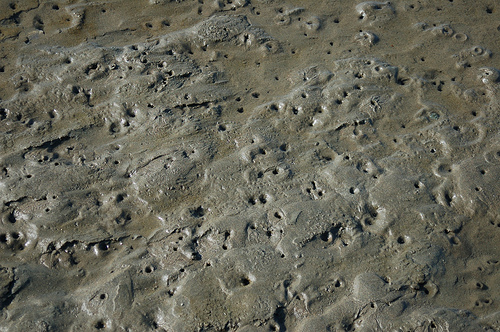
Next week I hope to begin surveying the population of Upogebia puttegensis at several locations in the Yaquina Bay estuary to assess how the population may be fluctuating. I also hope to begin collecting samples of both species of shrimp to see if the aging of the eye stalks is a viable technique.
Week 3 – July 16, 2013
I started this week at HMSC at dawn on Monday morning when I went out onto the mudflats at Sally’s bend on the Northwest side of the Yaquina estuary with Dr. Brett Dumbauld and one of his graduate students, Daniel Sund. Our mission was to assess the populations of Dungeness crabs (Metacarcinus magister) in two different species of sea grass beds, Zostera japonica andZostera marina. It has been suggested that the invasive species of sea grass, Z. Japonicaarrived in the estuaries of the Pacific Northwest in oyster seedling shipments from Japan. This project focuses on the crabs’ ability to utilize the invasive sea grass as habitat as well as the native sea grass. To test this theory the team placed shell bags out in the estuary at different distances from the shore, corresponding to Z. marina beds and Z. japonica beds. These shell bags were meant to attract crabs in the area so they could be counted and measured. The substrate in this area was very soft and difficult to work through, with all three of us getting stuck waist-deep in mud at some point, but we succeeded in counting and collecting all of the crabs and sea grass samples. Interestingly, we ended up finding more shore crabs, Hemigrabsus oregonensis, which feed on larval Dungeness crabs, than we expected.
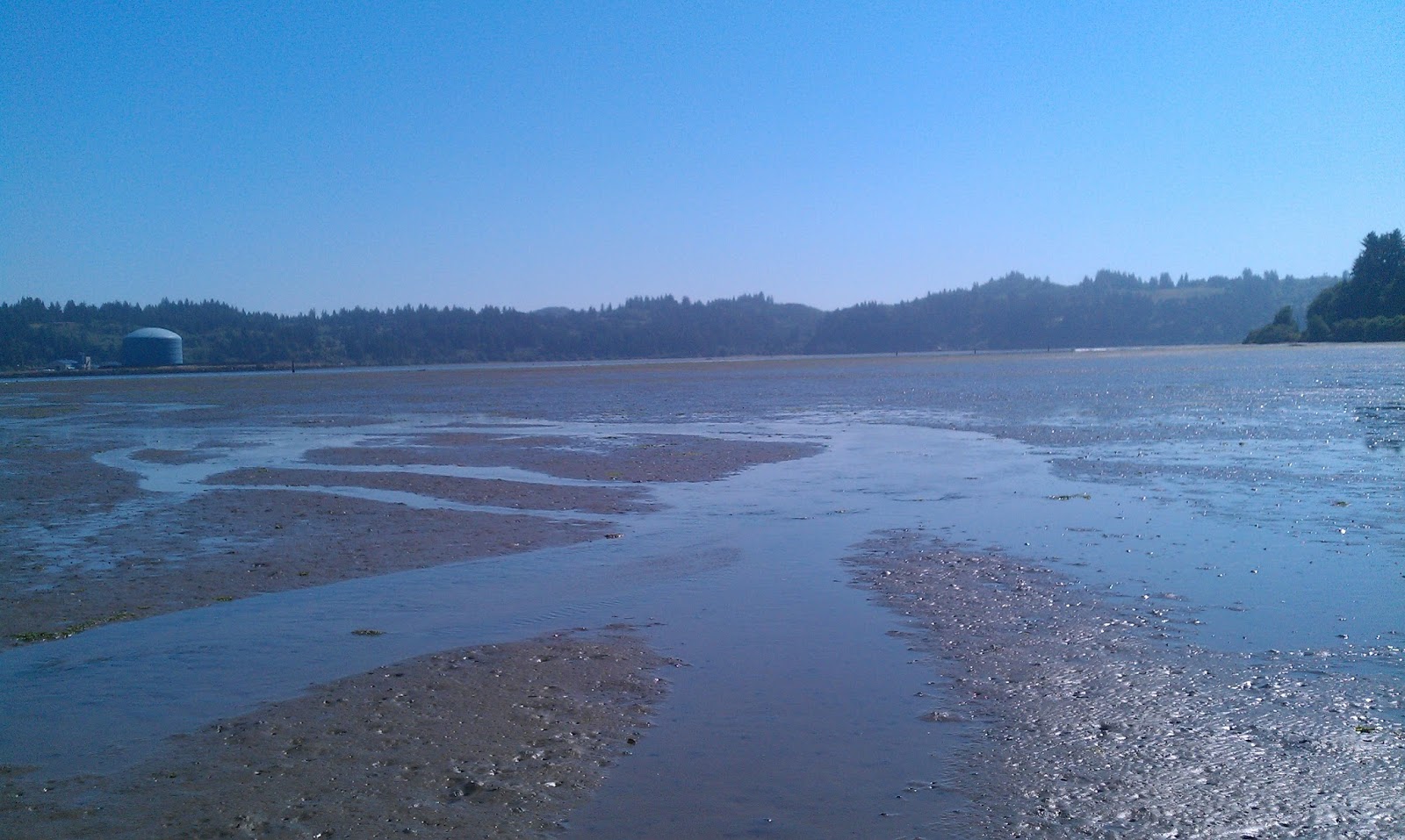
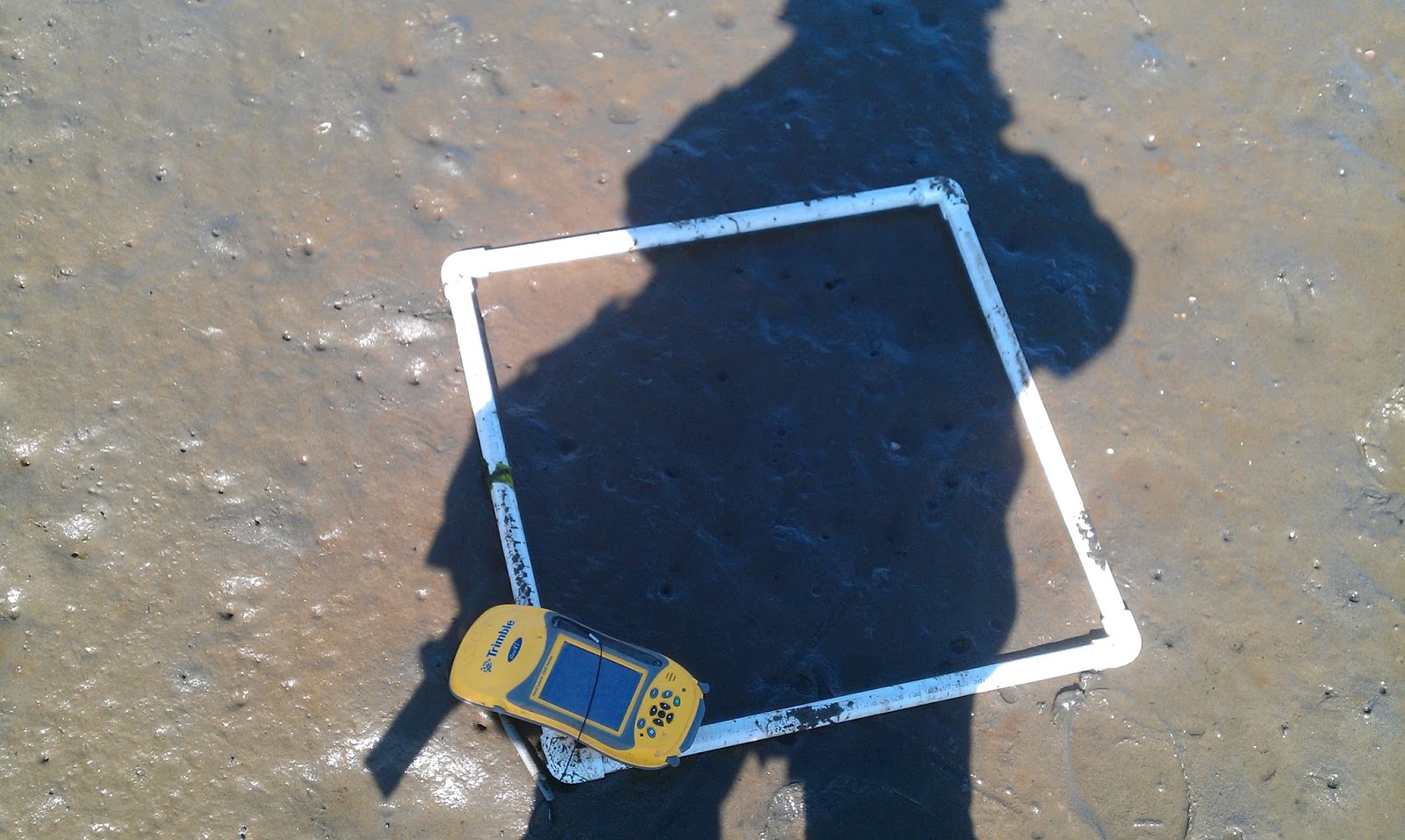
At the end of the day I was also able to volunteer in Morgan Bancroft’s lab and help feed his baby Dungeness crabs frozen krill. He is studying the effects of hypoxia—low oxygen levels—on the growth of Dungeness crabs and English Sole flatfish.
All in all it was another exciting week at Hatfield. Next week I hope to start dissections on the foreguts of mud and ghost shrimp for my aging analysis.
Below you can the Dungeness babies and the sun setting over Yaquina Bay!
Week 5 – July 30, 2013
This week at Hatfield I was able to help Brett complete his collections of the shells bags that were placed in the Zostera japonica sea grass beds and I also helped him sort through the samples. We found many more shore crabs, Hemigrapsus oregonensis, than we did Dungeness crabs which was consistent with the other sites that were closer to the mouth of the bay. I also helped Katelyn Bosley complete her survey of the mud shrimp Upogebia pugettensis by shrimp coring. This process starts by selecting 10 random points throughout the mudflat in low, medium, and high density beds and navigating to those points with our GPS unit. We then sink the core, a large metal device, into the mud and count the number of shrimp burrows inside the sample area. We then use a shovel to dig out the sediment and place it into sieves. We can use our hands or water to rinse away the sediment and expose the shrimp, which we then collect and freeze so Katelyn can extract lipofuscin from their brains later.
This week I was also give the amazing opportunity to go to a behind the scenes tour of the Oregon Coast Aquarium located right next to Hatfield. The educational program director Wendy took us on a tour and showed us the jellyfish propagating room, the brine shrimp growth area, the freezers where they keep the restaurant-quality seafood they feed the marine mammals, and the tops of the passages of the deep tanks.
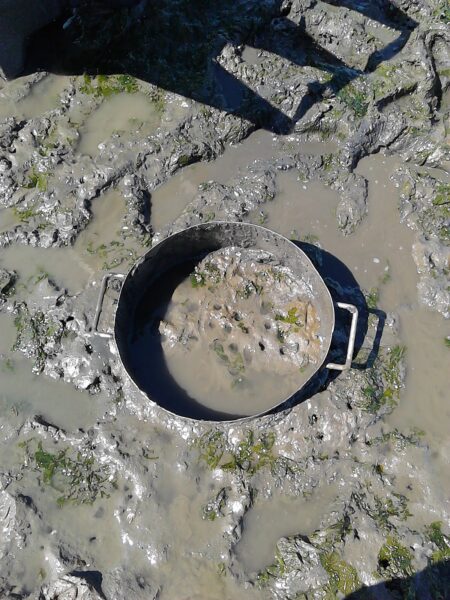
I also progressed with my gastric mill slides, which I was able to polish with the help of Tom Murphy, a scientist working in Dr. Jessica Miller’s lab. Though I am waiting on a compound scope camera to document my slides I have located an area of the lateral ossicle attached to the lateral tooth that looks promising for growth rings and hopefully I will decipher what these lines mean next week.
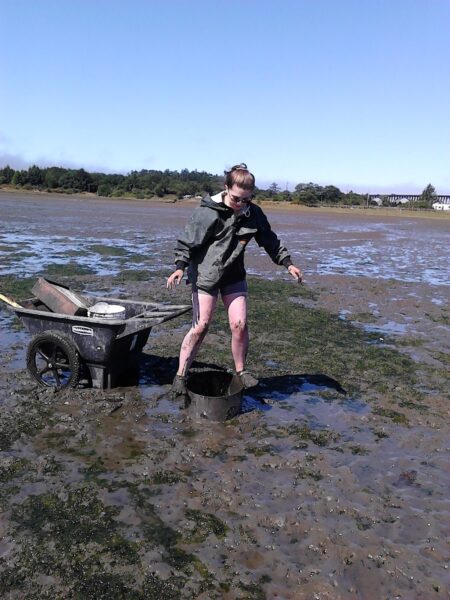
Week 6 – August 11, 2013
I cannot believe there are only two weeks left of my internship at Hatfield. This week I was given the wonderful opportunity to help with the NOAA’s “fish-cutting party”. This is a three-day event where volunteers learn how to dissect juvenile salmon and collect data for many different projects. All of the salmon from this session were caught in either the Columbia River or in curface ocean trawls in the Pacific near the mouth of the Columbia. There were four different types of salmon species including Coho, Chinook, Sockeye, and Chum. From each fish the volunteers would collect some or all of the following parts: stomach, intestines with pyloric cecae, tail fin clip, otoliths (fish ear bones), anterior and posterior kidneys, and copper tags that were implanted in the fish noses. We also checked the body cavity and air bladders for nematodes and other worm-like parasites. The hardest part for me was dissecting out the otoliths, which are tiny little bones located on either sides of the spine posterior to the eyes. The otoliths sit in fluid-filled sacs and help the fish balance and orient itself. These bones can be used for aging and studying the condition of the water at different stages in the fish’s life. Some of the stomachs I dissected had very interesting prey items still inside of them, including other small fish and even squid heads. The stomachs, intestines, and kidneys will be used by Dr. Kym Jacobson to check for parasites and the stomach contents will also be used to conduct a dietary study for the juvenile salmon. The pieces of fin were taken for genetics studies and each dissected part was labeled with the fish ID number so the results could be correlated with the weight, length, and type of fish it came from, along with where the fish was collected. I was very excited to be a part of this process and it was very impressive seeing how efficiently everyone worked together to accomplish this goal.
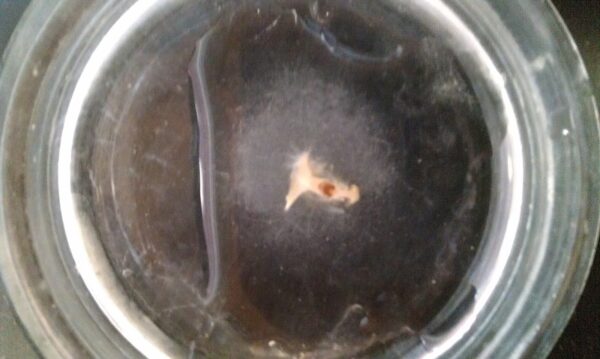
This week I also looked at some of the slides I prepared from the lateral teeth of the gastric mills of mud and ghost shrimp (Neotrypaea californiensisshown below). I was not able to find any ring-like structures or evidence of annual growth patterns so I did some further research and discovered that age rings were found in the ossicles of the gastric mills of larger crustaceans. Ossicles hard structures (less hard than the lateral teeth) that make up the walls of the gastric mill and hold the lateral and median teeth (pictured above in a petri dish and then embedded in resin) in place. I dissected some of these ossicles out of my remaining mud shrimp and discovered that there were some ring-like structures in a section of the pyloric ossicle that I polished. I spent the rest of the week mounting a camera on a compound scope and photographing these images. I hope to take some measurements and mount more slides with this same part from other shrimp to see how the ring number relates to the size of the shrimp. Overall it was a very promising discovery and I hope to learn more in the next couple of weeks!
Week 7 – August 22, 2013
During my second to last week at Hatfield I started wrapping up all of the slides and dissections I have been working on this summer. I was able to explain my project to all of the interns at the Oregon Institute of Marine Biology, who came down for an exchange day. It was really helpful being able to explain my process and the driving forces behind my project to a small group before getting up and giving my final presentation. I spent most of my week photgraphing all of the slide that I had polished and analyzing the photographs. I was also able to learn how to create a graph in R programming language with the help of Katelyn Bosley. This allowed me to plot the data I collected of carapace length vs. the number of rings observed in the gastric mill portions. After analyzing the photographs I had taken my curiosity got the better of me and I hijacked a couple large ghost shrimp that were meant for crab food and dissected out the gastric mills. I made the very exciting discovery that the ring structures I observed in mud shrimp occurred in ghost shrimp as well!
During this last week I was also able to help Brett with several projects aimed to assess the eelgrass habitats in the estuary. One project included deploying breeder traps to catch fish coming in at high tide. When we collected these traps we found quite a few staghorn sculpins, gunnels, and even a couple perch. Another project consisted of taking juvenile Dungeness crabs with hooks superglued to their backs and tethering them into the ground in the eelgrass beds. The idea was to catch fish who tried eating the crab with the hooks to get a look at predation on dungeness crabs. Instead we ended up with a lot of live angry crabs with hooks still on their backs…..The last project involved deploying GoPro cameras underwater at specific sites and filming the organisms inhabiting the eel grass beds. After four hours we went out again and collected the cameras so the footage could be analyzed. All of these projects share the same goal of learning more about the two eel grass species, Zostera marina (native) and Zostera japonica (invasive) and how this habitat is being utilized by different species.
Overall, this week was busy, exciting, long, and ended far too soon.
During week 8 I focused on my presentation and working with R to analyze the data I collected for mud shrimp. I was able to find a significant positive relationship between carapace length and the number of rings observed in mud shrimp by running a linear regression. The more time I spend researching these shrimp the more questions I seem to have!
I will miss the NOAA ships and the sounds of Yaquina Bay.
